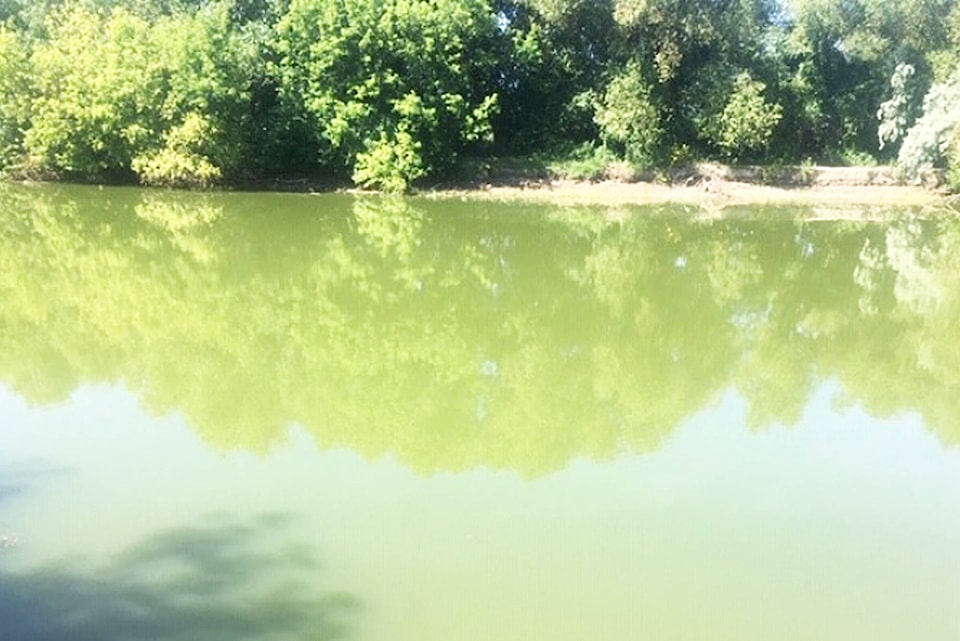The algae bloom in Salmon Arm Bay is being called ‘unprecedented,’ but scaled-back testing due to COVID-19 has made studying the conditions that created it difficult.
Hamish Kassa, the Columbia Shuswap Regional District’s environmental services coordinator, said in his 40 years of working on the lake, he has never seen an algae bloom the size of the one which has lent a green tint to the water in Salmon Arm Bay and the Sunnybrae area in recent weeks.
Kassa said the bloom seems to be receding and the water is clearing near Salmon Arm, but the algae is still prevalent near Tappen and Sunnybrae. Traces of the bloom have been observed as far away as the Cinnemousun Narrows.
While even a casual observer can see the green algae bloom, Kassa said quantifying it and tracking its growth has been made difficult by COVID-19. He said Ministry of Environment (MOE) monitoring of Shuswap Lake and its tributaries was discontinued due to COVID-19.
Read More: The turtle didn’t cross the road, thanks to Gardom Lake group
Read More: Comedic criminals caught on camera in Okanagan
At its Aug. 20 meeting, the CSRD board received an update on the condition of the algae bloom from Kassa and passed a motion requesting the ministry resume water quality testing. The board asked if any action would be taken in response to the large bloom.
Kassa said the CSRD is taking water samples and delivering them to the MOE lab in Vernon, with a primary focus on identifying the algae species composition of the the bloom. Anabaena, a type of blue-green algae, is the main species represented in the bloom according to Kassa.
Interior Health is also monitoring sites affected by the algae bloom for toxicity levels. While toxicity levels remain within Interior Health’s safe threshold, Kassa said he wouldn’t personally swim or let pets into the water near the bloom with so many other clear swimming areas available nearby.
Read More: Vancouver Island man uses bolt cutters to rescue fawn, near Tulameen
Kassa said the algae bloom has virtually eliminated growth of the invasive Eurasian Milfoil in Salmon Arm Bay this summer by taking up nutrients and limiting light that can penetrate the surface of the lake. Usually, the nuisance aquatic plant is controlled using a large floating rototiller, but it has not been required in the waters off Salmon Arm this year. Kassa said this effect is unlikely to be permanent.
With limited data available, Kassa said those monitoring the large algae bloom can only speculate as to its cause, but he pointed to the persistent high lake levels this year which remain a metre above average.
Cooling temperatures and more rain are expected to flush the algae out of the lake. Kassa said he expects the bloom will have dissipated by the end of September.
jim.elliot@saobserver.net
Like us on Facebook and follow us on Twitter
